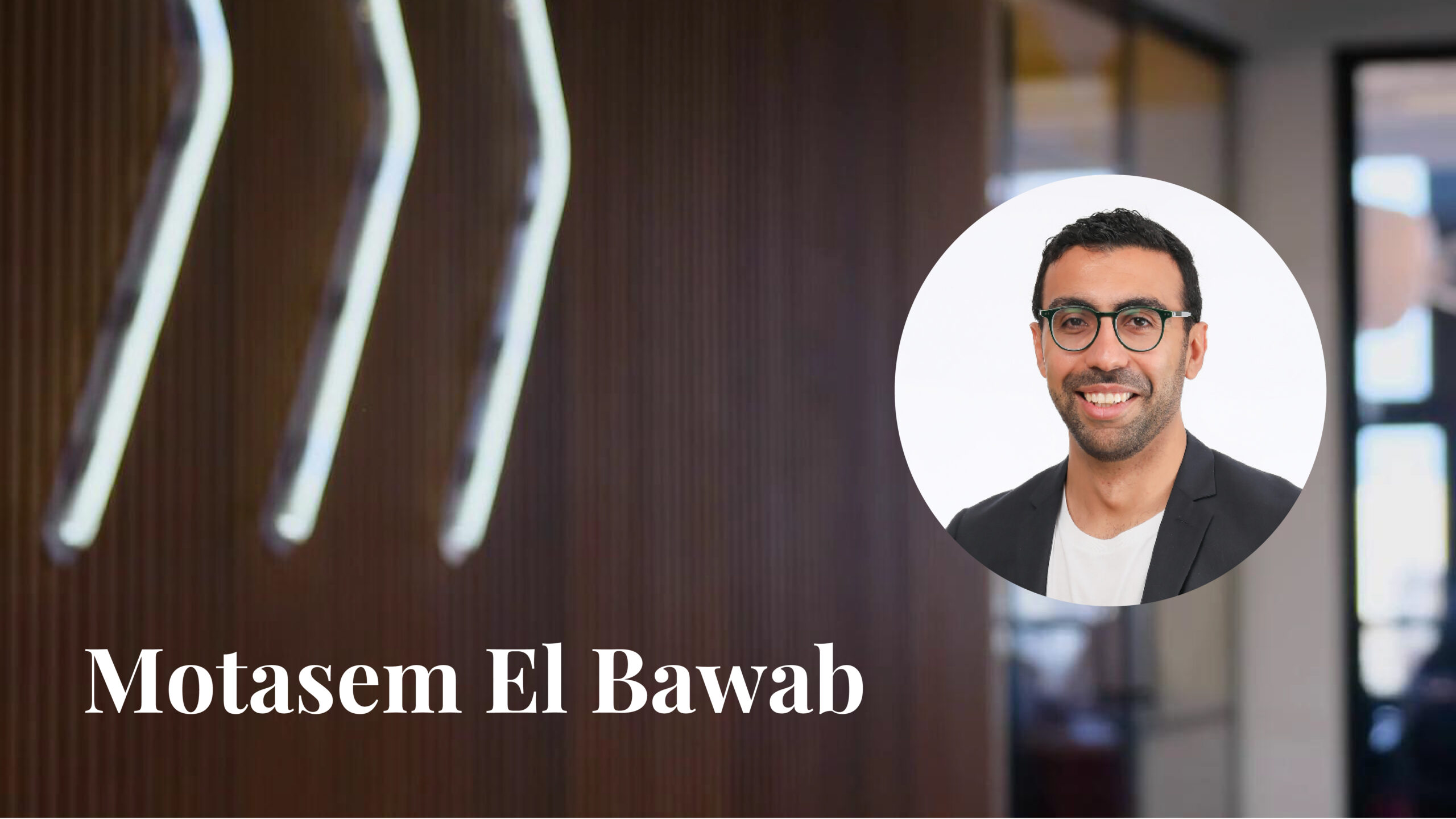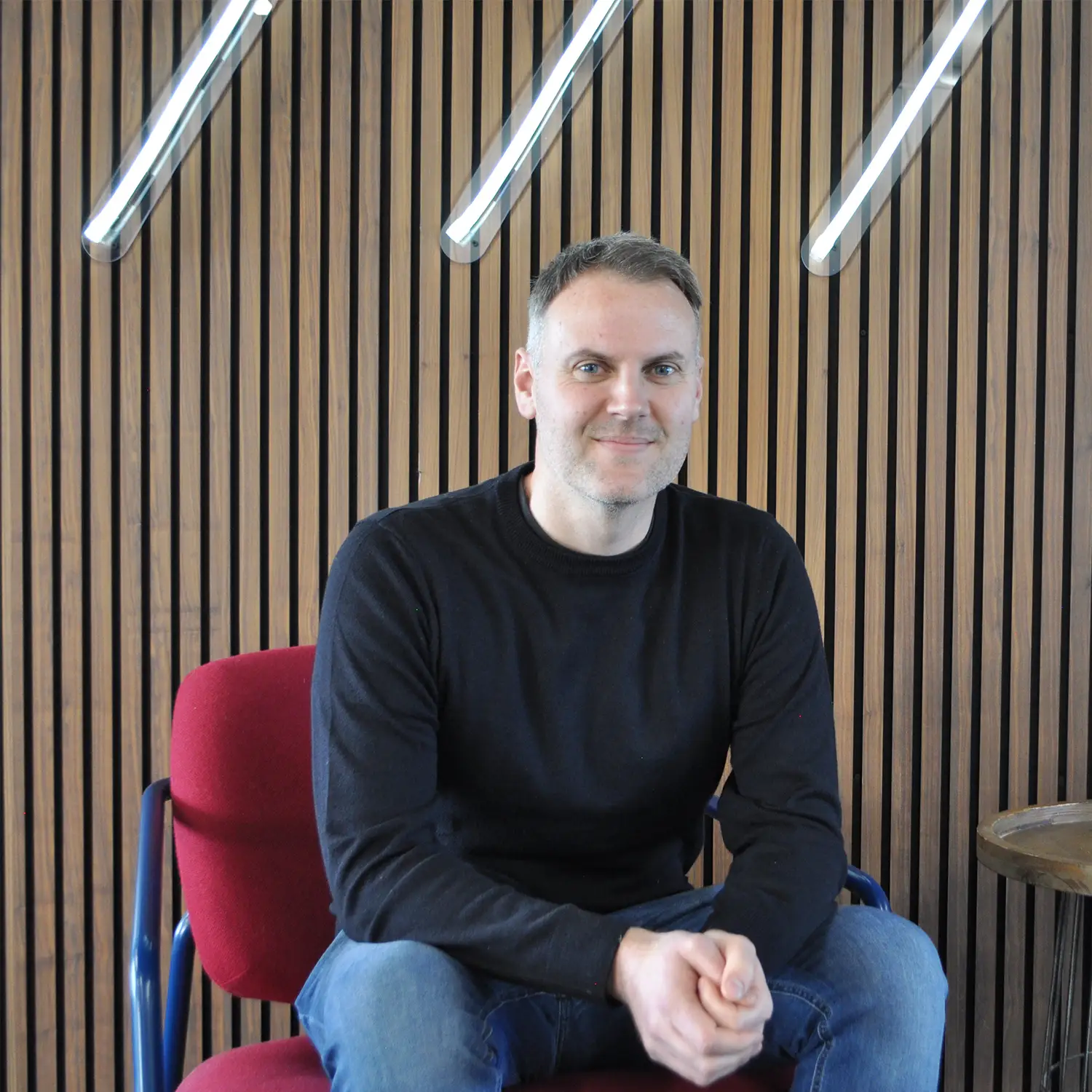A conversation with Boris Felts
Boris Felts is a product and technology leader with extensive experience in the video sector. He has guided companies through major technological transitions from hardware to software solutions and now into the cloud and AI era. With experience in both startups and larger enterprises, Boris brings a practical perspective on how businesses can navigate digital transformation effectively.
Twenty years ago, Boris Felts faced a critical decision. His video technology company had started down the hardware path for high-definition processing, designing custom boards and specialised chips, only to realise they lacked the resources to compete. The pivot to software wasn't just a tactical choice; it put them ahead of an industry transformation that would eventually make software the gold standard for video compression. Through decisions like this across his career with both startups and established companies, Boris has developed a pragmatic approach to technology adoption that balances innovation with business reality.
As a leader in the video business, Boris has guided companies through major technological transitions, from hardware-dominated solutions to software-defined approaches, and now into the era of AI and cloud computing. Throughout these evolutions, he's developed a nuanced understanding of not just what makes technology powerful, but what makes it viable in real-world business contexts.
In this conversation, Boris shares insights about technology adoption, transformation challenges, and the delicate balance between embracing innovation and managing organisational change.
Can you share an instance when integrating new tech really shifted things for your business, whether that was a complete transformation or just a significant innovation?
I can give you a couple of examples that show different levels of transformation. I'm in the video business and we produce equipment for video. Early in my career, about 20 years ago, when high definition was emerging, the only way to implement it technologically was with specific hardware. You needed to design boards, define specific ASICs, and so on.
My company started down this route. We worked with a partner on designing and implementing this approach, but soon realised we didn't have the funds or skills to do it properly. So, we pivoted and started doing it with pure software instead.
At that time, we didn't know if we had the capability to do this in real-time, but we knew that the technology infrastructure would eventually catch up and accelerate. That proved to be the right decision. We weren't equipped from a technology perspective initially, but afterward, we were ahead of the market. Today in our space, everyone is looking at software as the golden standard for quality when trying to do compression. The industry has shifted from being purely hardware-focused to software-driven, even though we had some hiccups in adopting this early on.
Fast forward to more recent experience with cloud technology that was an even bigger transformation. Cloud required us to think about architecture differently, to design things differently. It was much more of a technical challenge than just a product challenge.
And now with AI, we're seeing another evolution. I think this one will be across all parts of the portfolio and across all types of operations and will probably have an even bigger impact.
Sometimes it's difficult to grasp the full picture when you embrace a new technology because there are different phases. First, you fall in love with the technology, and it seems great. Then you find all the limitations and all the things you're going to lose. Finally, you get a sense of the reality of what you can truly accomplish. It's a fine balance of not going with technology for the pure sake of technology but really understanding what benefits you get from it and being ready to let go of some things you used to have. That's the shift every time.
You mentioned balancing the right technology with business needs. How do you approach that in your personal experience?
In business, you shouldn't adopt technology for technology's sake. You should always try to follow what's happening, but the reality is, and sometimes this isn't easy, you need to have a realistic view of the impact this new technology is going to have, both positive and negative.
Take cloud, for example. In our video business, it's a fantastic transformation that gives you tremendous power in terms of speed, deployment options, and where you can deploy. But there are inconveniences as well like the financial model is different. It doesn't work for every single customer. The way you sell it is very different. There's a variety of changes that you don't always consider at first with the technology.
You also need to keep in mind that the speed of change is sometimes much longer than what you expect. Just because you're the first adopter doesn't mean your clients will adopt it right away. You have to find the right balance. Overall, we try to pick technology that we believe is going to have a meaningful impact. When we truly believe something will make a difference, maybe not right away, but eventually, that's when we make the shift, and we have to be ready to let go of some aspects of what we've done to embrace the new technology.
What's been the biggest challenge you've encountered with integrating technology?
Let me give you a more specific example. In my background, I come from a business that sells to the telco market. They're used to buying technology as an appliance, a box, a physical product, it's also an investment financially in terms of capital expenditure (CapEx).
When cloud came along, we thought, "This is great, it's fantastic." You can actually upgrade, change, and bring innovation much faster. You don't have to worry about deployment or maintenance. All these benefits are really key and applicable to that market.
But the challenge was that it didn't exactly fit the business model for some of our clients because they were financially incentivised to reduce Opex, and therefore wanted to maintain the CapEx approach. It was also challenging for their own teams. If you tell them, "Hey, we're going to shift that business," sure, there may be long-term value, but their teams would be affected right away. So that adoption was difficult.
The same thing is happening with AI. Everyone's raving about AI right now, but it means there's going to be an increasing number of tasks you can do with these AI agents, which means you're going to need fewer people doing them.
Where you find the challenge typically is friction in adoption. Technology can do amazing things, but changing the behaviour of your own company, let alone your customers' companies, is difficult. It's much easier to create an application for virgin territory where there's no legacy, nothing to replace. But when you transform, whether it's your company or the whole industry, it takes a long time. You have natural frictions. You need to train people. You need to change organisations. All of this takes time.
What I've realised is that every time you adopt a new technology, the time of adoption is actually much longer than what you expect. Sometimes, some technologies even disappear before they get fully adopted. I don't think that's the case right now with cloud or AI, I think these things will last but look at virtual reality. It goes through hype cycles and then fades away because the adoption curve is very, very long. In short, the biggest challenge is that broad adoption takes much longer than you expect initially.
You've worked with both startups and global enterprises. How do you adapt your approach to innovation and product development when the scale and stakes are so different?
It's an interesting question. There are different angles to consider, like how you drive innovation in a small startup versus a large company. The way it's done is really the same fundamentally, it starts with a small group of people, and you really want to be out in the field. You want to confront your ideas with customers, clients, partners, and then based on that feedback, you innovate and iterate fast. That applies to large, medium, or small companies. It's the same approach: small team, very focused, trying to crack the problem, getting straight to the market, and trying to see how you can come to a minimum viable product very quickly.
What's different is the dynamics inside companies. If you're a startup, at the beginning, all you have to do is your innovation. You have no shackles, no constraints and that's your mandate. You have to innovate and create products fast because that's the purpose of your company.
When you become a bigger company, you have to manage your portfolio because you have conflicting interests. You may create a product that's disruptive to your existing product line. It can actually compete with your current offerings and be seen as a threat. It's always difficult in larger companies to make the right call. If you stay stuck with your existing products for too long, you'll face the "innovator's dilemma" and eventually die. So, you have to disrupt yourself.
The question becomes: when is the right time to disrupt yourself? What's the right moment for the company to do it? This is probably the most difficult part, understanding the various parts of the ecosystem, where each product line stands in its lifecycle, when you want to monetise it versus when you want to potentially kill or replace it.
I came from a startup background, and going into a bigger company was about understanding this complex ecosystem. We've made many mistakes because we tend to anticipate change much faster than what truly happens. The timing is what makes it difficult in larger companies and you can't ignore new technology, you've got to invest in it, but knowing exactly when to disrupt your own business is the challenge.
Launching products globally comes with unique challenges. Can you share a key lesson you've learned about crafting Go-to-Market strategies that truly resonate across diverse markets?
Early on in product development, as soon as you get to execution and scale, you need to find the best route to market. You need to determine not only what problem your product will solve, but what's going to be the best route for you to propagate that solution into the market.
When you're a small company, it's fine, the whole company's purpose is to drive that product or innovation. There's coherence between product, sales, marketing strategy, and the entire company is focused on that singular goal. But when you try to operate in bigger companies, that's where you get the scale, which is a benefit, but you also have to manage that scaledivide focus across multiple product lines.
In that case, it's really about trying to optimise how you leverage existing channels to market, because that's really the strength of larger companies, their established go-to-market approach, how they can tap into the market. You want to leverage that as much as possible to sell your new technologies.
If you ignore that and have the idea that you can sell a new product to a totally new market with a completely different route to market, that's typically not the best strategy for larger companies. The key is to plan all these things in advance and validate as much as possible that your plan aligns across your go-to-market strategy, your marketing plans, and your sales plans. If everything is aligned, you have fantastic power behind your launch; if not, you're going to struggle.
When multiple teams target the same audience, it can become inefficient, right?
Exactly. If you pitch eight different stories to the same audience, they're not going to truly understand what you're trying to tell them. It's about finding the right size, the right message, and what the company stands behind. I think the job is much easier when you're in a small company than in a bigger company… less stakeholders, less complications.
The perception side is also important. In a smaller company, you're unified as one voice. Your company is identified as doing a couple of things really well, and that's how you're perceived.
Looking into the crystal ball, what emerging technology do you see as essential for staying ahead in your industry, and what's your approach to harnessing it?
I don't think anyone would be surprised if I say AI is going to be part of the story moving forward. It would be surprising to ignore it and pass on it. AI's broad applicability enables it to tackle diverse challenges across the video lifecycle—from supporting content generation, automating content tagging and quality control to optimising distribution and personalisation at scale. In the video space, AI can extract concrete insights—such as scene recognition, object detection, speech-to-text transcription, and sentiment analysis—from raw footage. There's a wealth of information you can pull out, and based on that, you can enrich the content and do much more with it. That's a somewhat focused application for a specific part of the market.
More broadly, AI agents are beginning to automate tasks traditionally handled by engineers, marketers, and operations teams. For example, AI code assistants can draft and review software modules, while marketing automation platforms can generate targeted copy and optimise campaign performance. This is one of the most intriguing topics right now because when you start experimenting with it, you can see there's so much potential, although it's still not at the point where you can fully let it operate without supervision. AI still gets simple things wrong, like when someone asked how many "r" are in the world "strawberry" and the AI kept getting it wrong. These little things remind us we need to keep a human eye on the technology – at least for now.
I was listening to an interview with Eric Schmidt recently, where he was talking about the impact of AI on society. All the big leaders right now are empathetic about AI but foreshadow job impacts. They emphasise AI's significant productivity benefits. They rightfully point to the fact that there is so much more music, podcast, articles, content, application you can create effectively, allowing you to expand exponentially your online presence. But on the other side I was thinking that there is only so much a human can listen, read, watch or play during the day. We are going to be inundated with AI-generated content, we will need AI assistance to sort genuine and original content!
At some point, it will come down to the quality of the source and the ability of creators to stand out; recognition will go to those producing genuinely useful, thoughtful content. The interesting transition will be seeing how unique voices and innovations emerge while AI handles the more common tasks. Over the next 5–10 years, AI will drive significant efficiencies while disrupting roles centred on routine digital tasks. I remain optimistic that it will also foster new opportunities for creative, strategic work, create new jobs and elevate human relationship and craftsmanship.
Do you think AI will replace the human element in B2B relationships?
We're still in a business-to-business world where human interaction and sales relationships remain very important, but there are peripheral aspects that can be automated. In the marketing space, for example, we can use AI for initial outreach, targeting specific companies, identifying people within those companies, basically ensuring you target the right audience without being negatively impacted by your message.
You can produce a lot of content with AI, but at some point, it becomes somewhat meaningless if there's no real thought behind it.. It lacks the spark of creativity that differentiates truly valuable content.
I think the creative piece is going to be what differentiates people going forward and having genuine thoughts about business, your industry, or domain. That's how you can set yourself apart from the rest, because I think we'll see a lot of AI-generated noise.
I've seen this in our own approach to marketing. We previously outsourced our digital marketing efforts, but we had no control over the narrative, our narrative wasn't good enough. So, we internalised that function and the tools that go with it, because staying in control of your message becomes even more important in this AI-driven world.
If you could hop in a time machine back to the start of your tech journey, what piece of advice would you give yourself?
I think it comes back to some of the points we've discussed. You've got to embrace change. Sometimes your past is done. Early on, we tended to look at technology changes as additions on top of what we already had, but that's not always the right approach. Sometimes you have to let go of the past, look at what new technology offers differently, and see if that makes sense. It's not always about aggregating everything you had before.
Depending on whether you're conservative or not, you've got to embrace change. With AI, for instance, you're going to need to understand its impact. But also be aware that just because you or I like a technological change, that doesn't mean the company or industry will adopt that change at the same speed.
Multiple times in my career, I've had what I thought was a great idea that everyone should be excited about. But then you have to consider all the human aspects… fear of change, fear of losing jobs, fear of needing retraining, fear of being left out. These things create drag on transformation, and not everyone is equally capable of adapting.
So, the process takes much longer than what you might anticipate. I'm not saying you need to be patient, but you need to be realistic. If I look back at my own career, I'd say go all-in on changes that will eventually disrupt the industry or society. It's better to commit fully and not go halfway, but keep in mind that change in enterprise and society can take much longer than you initially expected.
Boris's journey shows how successful digital transformation requires both technological vision and practical reality—understanding not just what technology can do, but how people and organisations adapt to change.
If reading this sparked ideas from your own tech adventures, we'd love to hear them. Every professional has unique stories that could light the way for others navigating today's fast-changing digital landscape.




